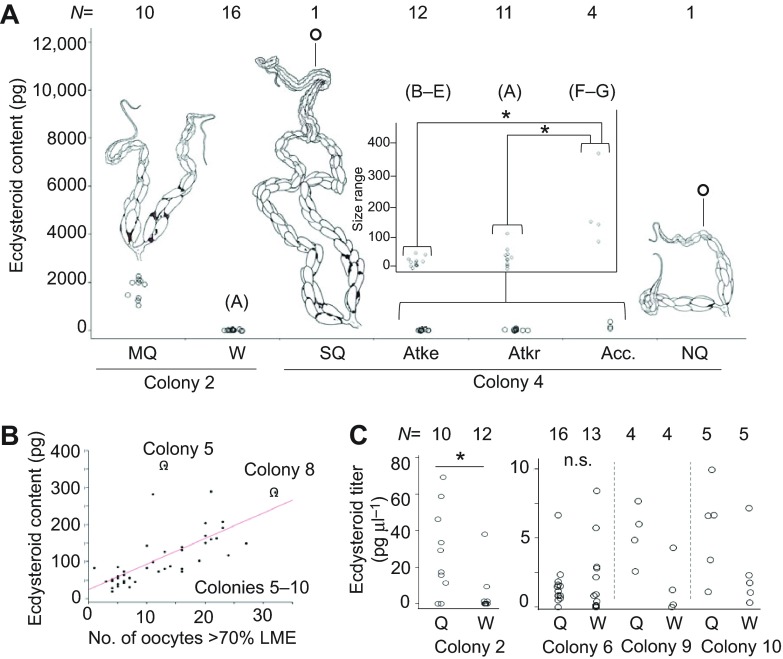Fig. 4.
Ovarian ecdysteroids and hemolymph ecdysteroid titer in P. micans. (A) Ecdysteroid content of the ovaries of queens, workers and transitional types. Queens, whose ovaries are shown [black areas represent yellow bodies indicating a history of ovipositions (Tyndale-Biscoe, 1984)], have higher levels of ecdysteroids than their worker nestmates (Mann–Whitney U-test: Z=4.19, P<0.001). MQ, multiple queens; SQ, single queen. The inset in A represents an expanded scale for attackees, attackers and accepted females, showing that accepted females with well-developed ovaries had higher levels of ovarian ecdysteroids than the attackers (Steel–Dwass all pairs test: Z=2.34, P=0.045) and attackees (Z=2.52, P=0.03). Ovary size ranges are indicated in parentheses. (B) A pooled analysis of ovarian ecdysteroid content for 45 queens from colonies 5–10 revealed a significant correlation with ovary size (number of oocytes >70% length of mature egg, LME) (Spearman's ρ=0.84, P<0.001); Ω indicates last queens removed from a nest. (C) Mixed model analysis of hemolymph ecdysteroid titer from four colonies (2, 6, 9 and 10) showing that queens have higher titers than workers (F1=7.39, P=0.008; t=2.72, P=0.008). Colony had no effect on the difference in JH titer. *P<0.05, **P<0.01.

